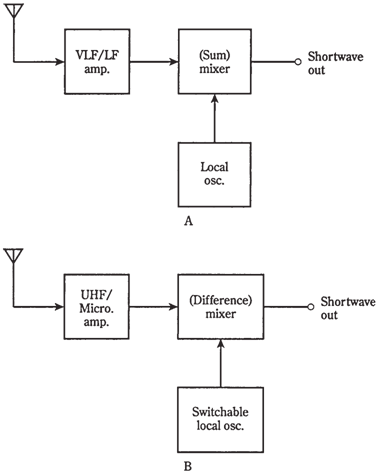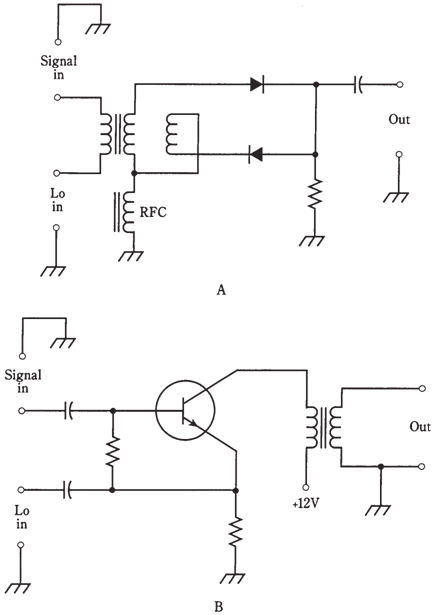The product detector
For reception of CW, FSK, and SSB signals, a product detector is commonly used. It works according to same basic principle as mixer. The incoming signal combines with signal from an unmodulated local oscillator, generating audioor video output.

Figure--At point A, an up converter that allows VLF/LF reception on a shortwave receiver. At point B, a down converter which allows UHF/microwave reception on a shortwave receiver
Product detection is similar to heterodyne detection in a direct-conversion receiver. But product detection is done at single frequency, instead of at a variable frequency as is case in direct conversion reception. The single, constant frequency can be obtained by mixing incoming signal with output of a variable-frequency LO. The process is called as heterodyning, and a receiver which employs this scheme is called as a superheterodyne.Two product detector circuits are shown in the figure given below. At point A, diodes are used; there is no amplification. At point B, a bipolar transistor is employed; this circuit gives some gain. The essential characteristic of circuit is the nonlinearity of semiconductor devices. This is responsible for generating the sum and difference frequencies which you hear or which are converted into video images.

Figure--At point A, a passive product detector. At B, a product detector which provides some amplification.